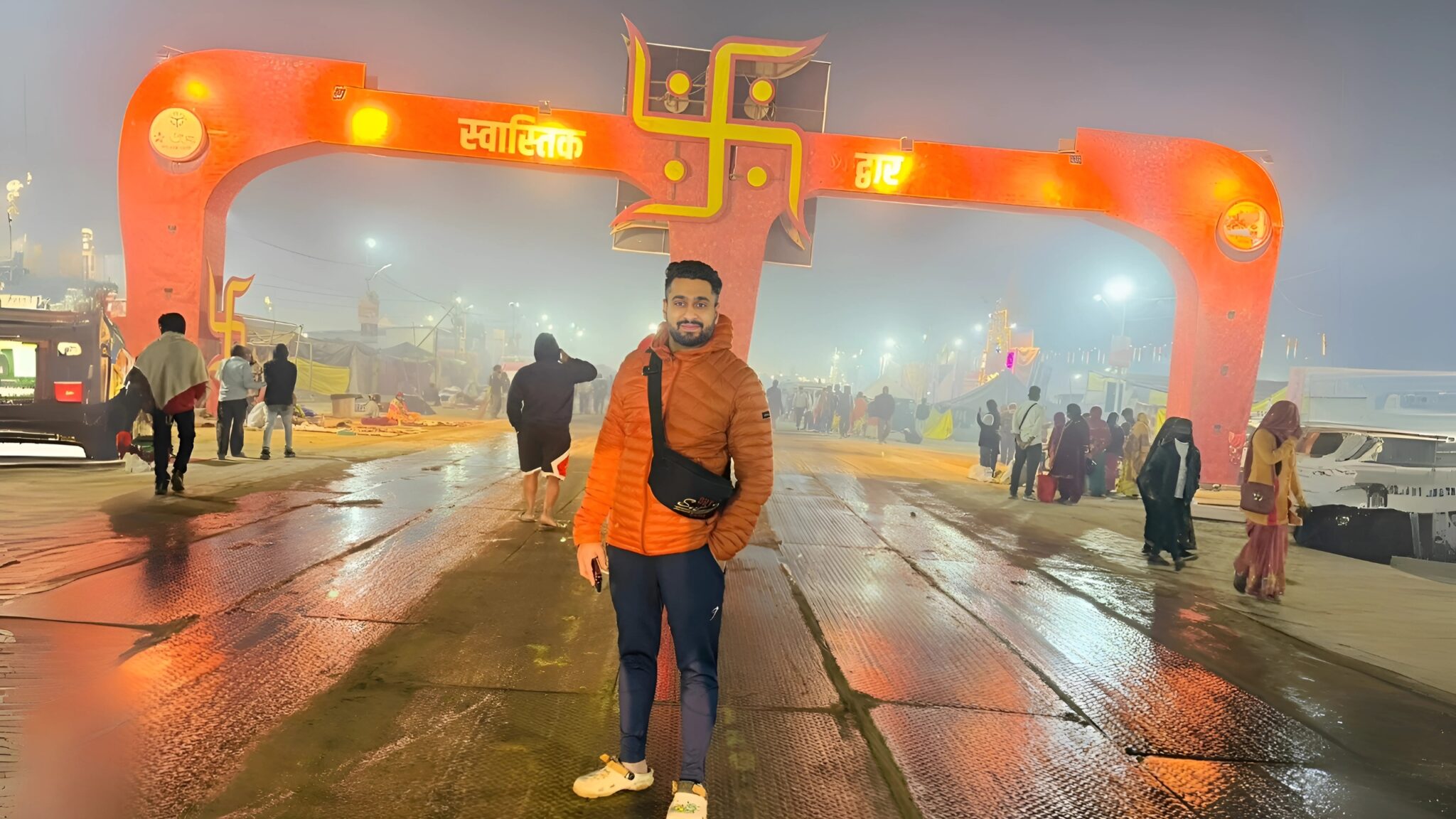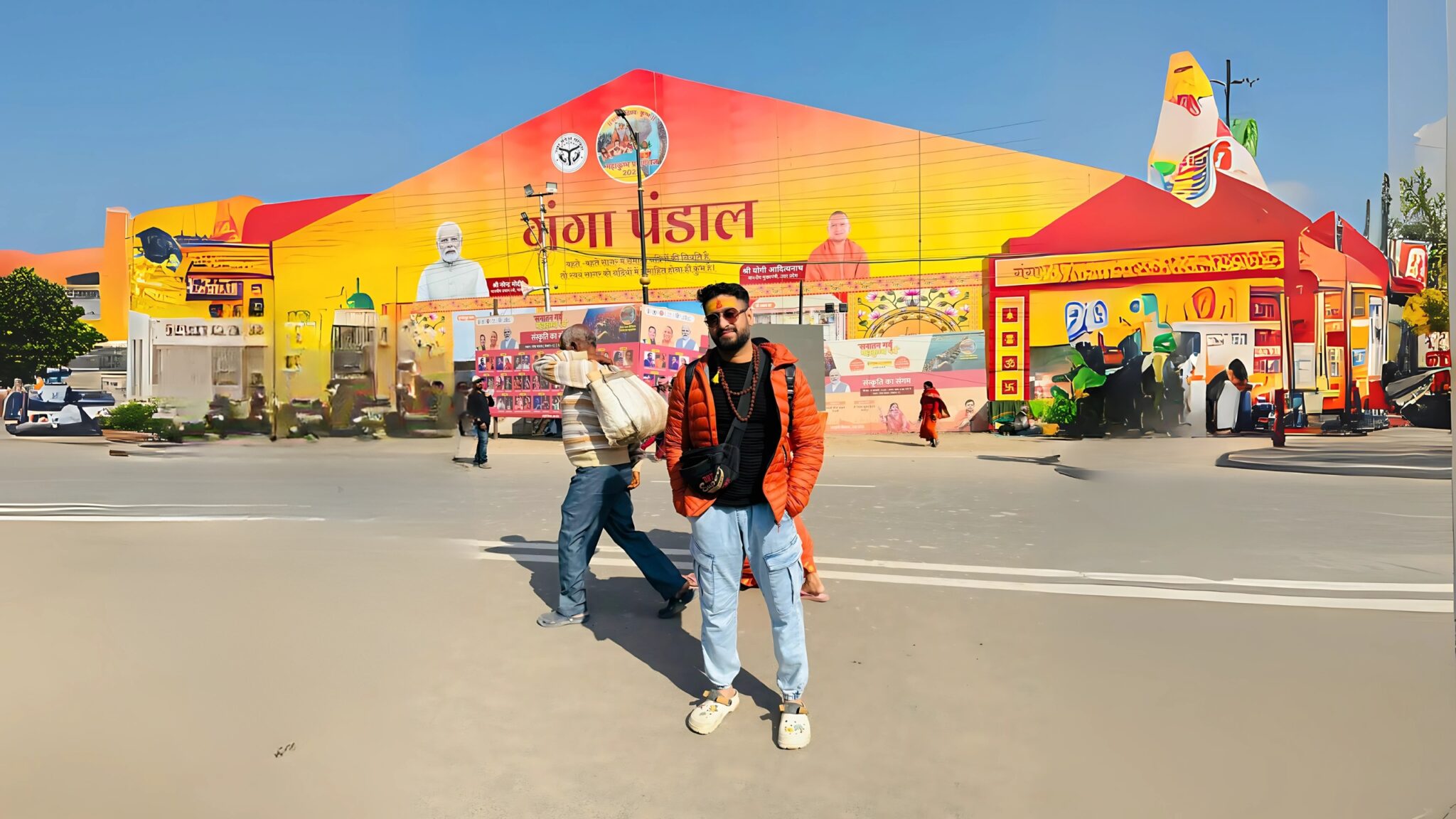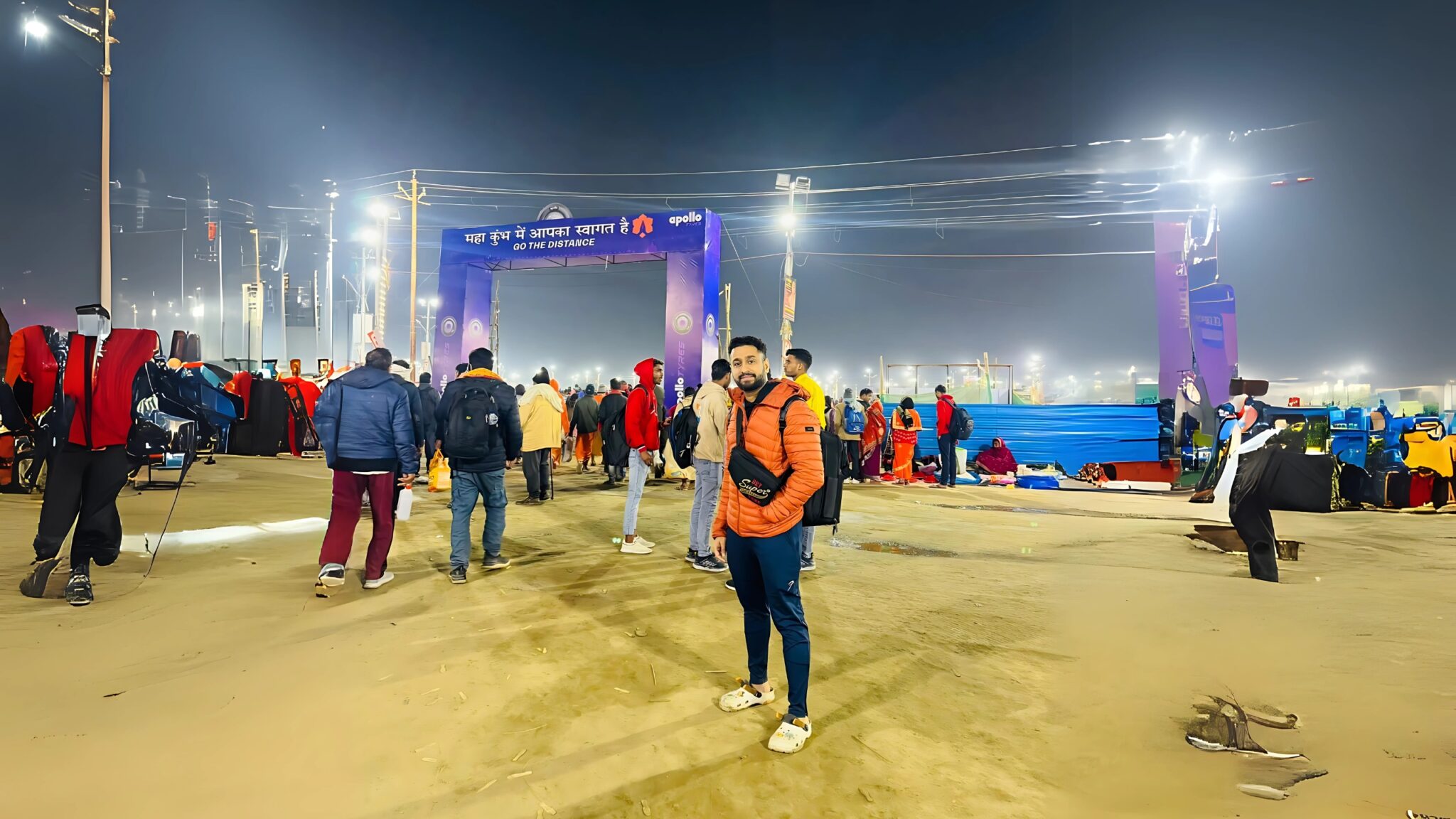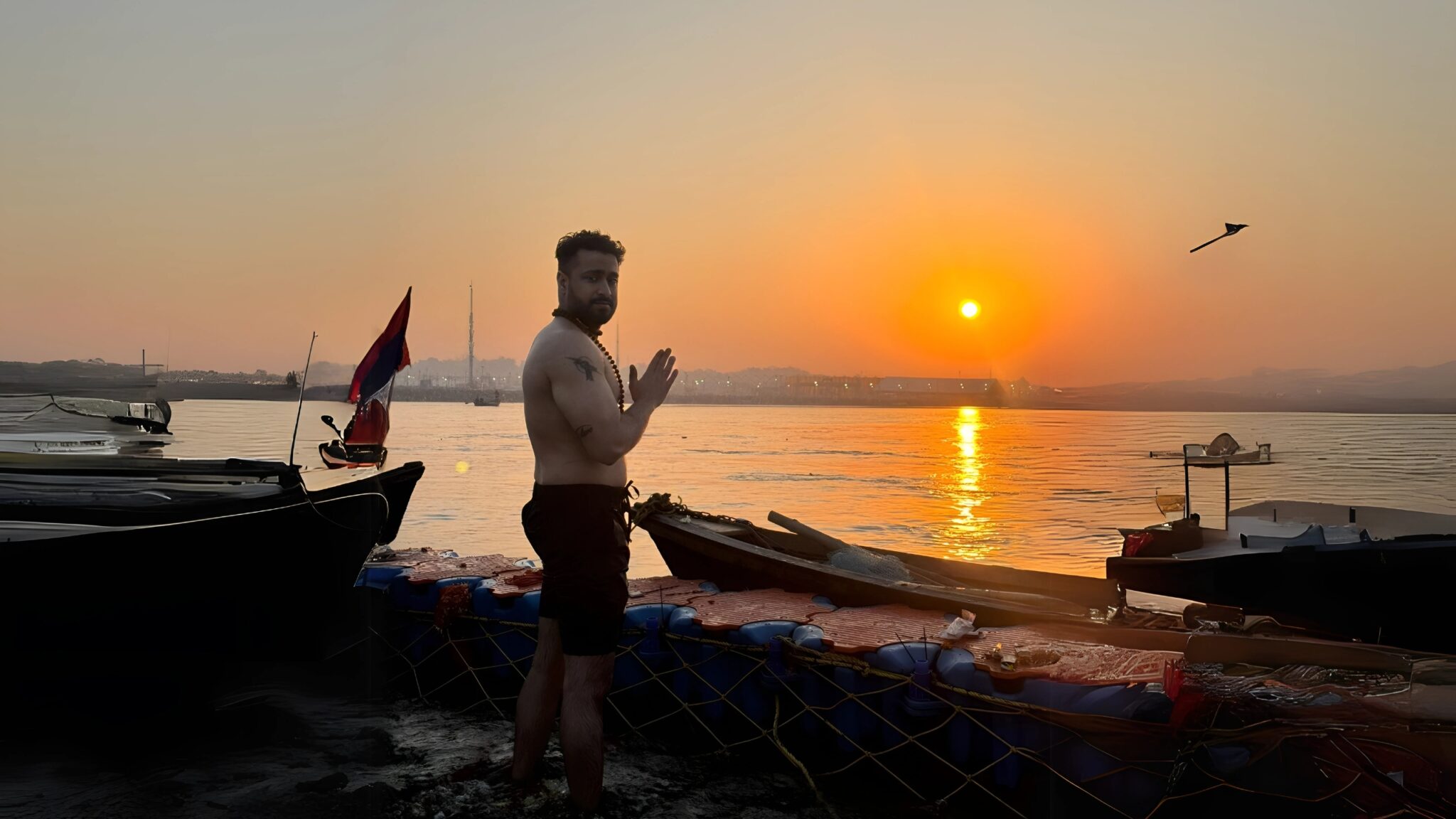The Kumbh Mela is more than just a festival—it is a grand convergence of spirituality, faith, and cultural harmony. In 2025, millions of devotees from across the world will gather in Prayagraj, Uttar Pradesh. Maha Kumbh Mela 2025 in Prayagraj, How to Reach Triveni Sangam, Accommodation & Travel Tips. Plan your visit now!
To participate in the Maha Kumbh Mela, one of Hinduism’s most sacred events. Held every 12 years, this historic celebration is deeply rooted in the ancient legend of the Samudra Manthan, the cosmic churning of the ocean where gods and demons vied for the nectar of immortality.
Taking place from January 14 to February 26, 2025, the Kumbh Mela presents a profound opportunity for devotees to cleanse their souls by taking a ritual dip at the Triveni Sangam, the sacred confluence of the Ganga, Yamuna, and the mystical Saraswati rivers. It is believed that the celestial alignments during this period magnify the spiritual energy of the site, making it an especially auspicious time for prayer, meditation, and self-purification.
Beyond its religious significance, Kumbh Mela is also a reflection of India’s rich cultural heritage. The event showcases a vibrant blend of traditions, including Shahi Snans (Royal Baths), spiritual discourses, yoga sessions, and devotional music performances, making it a powerful convergence of faith, culture, and community.
Whether you’re a devout pilgrim seeking spiritual enlightenment or a curious traveller eager to witness one of the largest human gatherings on Earth, Kumbh Mela 2025 promises a transformative experience like no other.
Dates and Location
The Maha Kumbh Mela 2025 will be held in the sacred city of Prayagraj (formerly Allahabad), Uttar Pradesh, at the Triveni Sangam, where the rivers Ganga, Yamuna, and the mythical Saraswati meet. This confluence is believed to hold immense spiritual power, drawing millions of pilgrims who seek to cleanse their souls through ritual bathing.
The Kumbh Mela in 2025 begins on January 14, coinciding with the auspicious day of Makar Sankranti, and will conclude on February 26, marked by the celebration of Maha Shivratri. During this period, several important bathing dates, known as Shahi Snans (Royal Baths), take place, where devotees and religious leaders gather to take a dip in the holy waters.
https://www.youtube.com/watch?v=wsbkO56kT2o
Key Bathing Dates for Kumbh Mela 2025:
- Makar Sankranti (First Shahi Snan): January 14, 2025
- Mauni Amavasya (Second Shahi Snan): January 29, 2025
- Basant Panchami (Third Shahi Snan): February 3, 2025
- Paush Purnima: January 13, 2025
- Achla Saptami: February 4, 2025
- Maghi Purnima: February 12, 2025
- Maha Shivratri (Final Snan): February 26, 2025
These dates hold immense significance, as millions of pilgrims will gather at the Sangam for these holy baths, which are believed to wash away sins and bring spiritual purification.

Historical and Mythological Background
- The origins of the Kumbh Mela are deeply intertwined with Hindu mythology, particularly the story of the Samudra Manthan, or the churning of the ocean. According to ancient scriptures, this cosmic event was a collaboration between the Devas (gods) and Asuras (demons) in their quest for Amrit, the nectar of immortality. As the gods and demons churned the ocean, a Kumbh (pot) of nectar emerged. To prevent the demons from gaining immortality, the god Vishnu, in his form of Mohini, seized the pot and flew away with it. During his journey, a few drops of the nectar fell at four locations: Prayagraj, Haridwar, Ujjain, and Nashik.
- These four places became sacred pilgrimage sites where the Kumbh Mela is celebrated on a rotating basis. The significance of Prayagraj (formerly known as Allahabad) lies not only in this myth but also in its geography. It is at the Triveni Sangam, the confluence of three sacred rivers: Ganga, Yamuna, and the mythical Saraswati. This confluence is considered one of the holiest places in Hinduism, believed to be imbued with extraordinary spiritual energy.
- The Kumbh Mela is celebrated in a 12-year cycle, corresponding to the astrological positions of the Sun, Moon, and Jupiter. The 2025 Kumbh Mela is particularly significant because it is a Maha Kumbh, which occurs only once every 144 years at Prayagraj. This celestial alignment during the festival is believed to create an auspicious time for spiritual activities, with pilgrims taking a holy dip in the rivers to cleanse themselves of past sins and achieve moksha.
- The Kumbh Mela not only serves as a religious gathering but also reflects centuries-old cultural traditions, bringing people together in an extraordinary display of faith, devotion, and community.
Significance of Ritual Bathing
At the heart of the Kumbh Mela lies the sacred ritual of snan (bathing) in the holy rivers. Devotees from across the world gather at the Triveni Sangam—the confluence of the Ganga, Yamuna, and the mythical Saraswati—to immerse themselves in the purifying waters. This act of bathing is not just a physical cleanse but is believed to offer profound spiritual benefits. According to Hindu belief, taking a dip during the auspicious days of the Kumbh Mela can wash away sins accumulated over lifetimes, helping devotees achieve moksha or liberation from the cycle of rebirth.
The ritual of bathing during Kumbh is especially significant on certain days, known as Shahi Snan (Royal Bathing Days). These days are marked by grand processions led by the Naga Sadhus and other ascetic orders (Akharas), who march to the river with pomp and fervor before they perform the first ceremonial bath. This royal bath is considered the most potent in terms of spiritual cleansing, with the belief that anyone who bathes during this time will be freed from all past sins.

Major Events and Ceremonies at the Maha Kumbh Mela 2025
The Maha Kumbh Mela is an awe-inspiring confluence of spirituality, culture, and devotion, drawing millions of pilgrims, saints, and travelers from around the world. how to reach Triveni Sangam At the heart of this grand gathering are its sacred rituals and ceremonies, with the Shahi Snan (Royal Bath) standing as the most revered tradition. However, beyond these holy dips, the Mela is enriched with a myriad of spiritual and cultural experiences, creating an atmosphere of profound reflection and devotion.
1. Shahi Snan (Royal Bath)
The Shahi Snan is the ceremonial pinnacle of the Kumbh Mela, where ascetic orders, known as Akharas, lead magnificent processions to the sacred riverbanks for a ritualistic dip. Among them, the Naga Sadhus, renowned for their extreme austerity and renunciation of worldly ties, captivate onlookers with their ash-covered bodies and symbolic body art.
Each Shahi Snan is marked by vibrant processions, rhythmic chants, and the resounding echoes of conch shells—signifying the spiritual purification of body and soul. In 2025, the most auspicious Shahi Snan dates are:
- January 14 – Makar Sankranti
- January 29 – Mauni Amavasya
- February 3 – Basant Panchami
These sacred bathing days witness the largest gatherings, graced by spiritual leaders, devotees, and seekers from all walks of life.
2. Spiritual Discourses and Bhajans
Throughout the Mela, revered saints, scholars, and spiritual gurus deliver enlightening discourses on Hindu philosophy, self-realization, and the path to moksha (liberation). These talks, attended by thousands, offer deep insights into the essence of life and faith.
Adding to the spiritual ambiance, devotional singing, or bhajans, fills the air with melodious hymns dedicated to Hindu deities. The soulful chants create an uplifting and transformative experience for all attendees.
3. Yoga and Meditation Retreats
The Kumbh Mela provides a unique setting for yoga and meditation workshops. Guiding participants toward inner peace and physical well-being. These sessions, often led by renowned yoga masters, offer a holistic experience—complementing the ritual baths with practices that promote mindfulness and self-discipline.
4. Cultural Performances and Theatrical Depictions
Beyond its religious significance, the Kumbh Mela is also a celebration of India’s cultural heritage. The event features:
- Traditional music and dance performances
- Theatrical representations of Hindu epics such as the Ramayana and Mahabharata
- Folk storytelling and artistic expressions that narrate India’s rich mythological past
These performances not only entertain but also serve as a bridge connecting attendees to the spiritual essence of the festival.
5. Akharas and the Ascetics
A defining aspect of the Kumbh Mela is the presence of Akharas—spiritual monastic orders that embody renunciation and discipline. Each Akhara follows distinct traditions, but together, they represent unwavering spiritual dedication and enlightenment.
The most captivating among them are the Naga Sadhus, who, in their vow of nudity, symbolize absolute detachment from worldly life. how to reach Triveni Sangam here in info Visitors gather to witness these ascetics engage in rituals, discussions, and profound spiritual practices, gaining insights into their disciplined way of life.

Attractions at Kumbh Mela 2025
While the spiritual bathing in the sacred rivers is the central focus of the Kumbh Mela, how to reach Triveni Sangam here is the event is a grand celebration that extends far beyond the ritual dips. From cultural experiences to interactions with sadhus and religious performances, there’s a lot for visitors to explore. Here are some of the top attractions to experience during Kumbh Mela 2025:
1. Triveni Sangam
The Triveni Sangam, located in Prayagraj, is the confluence of three rivers: the Ganga, the Yamuna, and the mythical Saraswati. Bathing at this sacred spot is believed to purify the soul and wash away sins. The Sangam is a hub of activity during the Kumbh Mela.
With millions of pilgrims visiting to immerse themselves in the waters. Apart from its religious significance. The site offers stunning views and a peaceful environment for meditation and reflection.
2. Sadhus and Akharas
The Naga Sadhus are one of the most fascinating and photographed elements of the Kumbh Mela. These ascetics, often covered in ash and wearing minimal clothing, are part of different sects known as Akharas. The Akharas have their customs and rituals, and witnessing their processions during the Shahi Snan is a highlight of the festival. For visitors, interacting with these holy men offers a glimpse into their austere lifestyles and the deep spirituality they practice.
3. Religious and Historical Sites in Prayagraj
While attending Kumbh Mela Triveni Sangam, How to Reach Triveni Sangam visitors can explore some of Prayagraj’s historical and religious landmarks:
- Swaraj Bhawan: The ancestral home of India’s first Prime Minister, Jawaharlal Nehru.
- Allahabad Fort: Built by Emperor Akbar in the 16th century, this fort offers a window into India’s rich Mughal history.
- Anand Bhavan: Another historical home tied to the Nehru family, now a museum that details India’s struggle for independence.
4. Cultural Performances and Devotional Music
Kumbh Mela is not only about spirituality but also a celebration of Indian culture. Visitors can enjoy performances of traditional music, dance, and theatrical reenactments of mythological stories such as the Ramayana and Mahabharata. Bhajan and kirtan sessions (devotional singing) add a sacred aura to the atmosphere, with chants and hymns filling the air at various points throughout the event.
5. Evening Aarti at the Sangam
One of the most mesmerizing experiences is the evening Aarti held at the banks of the Sangam. As the sun sets, thousands of diyas (oil lamps) float on the river while priests offer prayers and chants to the river gods. Secondly The scene is awe-inspiring, with the lights reflecting on the water, creating a truly magical and spiritual ambiance.
6. Visiting the Akshaya Vat and Patalpuri Temple
The Akshaya Vat, or the eternal banyan tree, holds immense significance in Hindu mythology. Located within the Allahabad Fort, this tree is believe to indestructible and a symbol of spiritual resilience. The Patalpuri Temple, also situated inside the fort, is another must-visit attraction, where devotees can pay homage to various Hindu deities.

Cultural and Social Importance
The Kumbh Mela is more than a religious gathering; it is a celebration of India’s vast cultural diversity and unity. The 2025 Maha Kumbh in Prayagraj serves as a platform where millions of people from different parts of India, and the world, come together, transcending social, economic, and geographic barriers. The festival embodies the spirit of togetherness, showcasing how deeply intertwined faith, culture, and heritage are in Indian society.
1. A Symbol of Unity
Firstly One of the most profound aspects of Kumbh Mela Prayagraj is how it brings people from various castes, regions, and social backgrounds together. Despite the immense diversity among the attendees, the festival fosters a sense of universal brotherhood and communal harmony. Pilgrims, irrespective of their status, gather for the common purpose of spiritual cleansing and salvation.
2. Showcasing Indian Culture
Kumbh Mela Prayagraj is a live showcase of India’s rich cultural heritage. From traditional art forms, music, and dance performances to handicrafts and local cuisine. the festival provides a stage for local artisans and performers to display their talents. Devotional music, in the form of bhajans and kirtans, creates a deeply spiritual environment, while cultural programs allow attendees to immerse themselves in various aspects of Indian culture.
3. A Hub for Spiritual Learning
Kumbh Mela has historically been a gathering place for scholars, saints, and philosophers. Because during the Mela, spiritual leaders and gurus from across India gather to deliver discourses on religious philosophy, ethics, and spirituality. These gatherings, known as satsangs, provide an opportunity for devotees to gain wisdom and insights into the deeper meanings of life, karma, and dharma.
4. Strengthening Faith and Devotion
For many pilgrims, attending the Kumbh Mela Triveni Sangam Prayagraj is a once-in-a-lifetime opportunity that reaffirms their faith and devotion. Also, The communal act of bathing in the holy rivers, alongside millions of others, enhances the collective sense of spirituality and provides a shared experience that reinforces belief in religious traditions. Because The festival also plays an essential role in passing on these traditions to the younger generations.
5. Economic and Social Impact
Kumbh Mela also contributes to the local economy by generating jobs and boosting tourism in Prayagraj. how to reach Triveni Sangam and From vendors and local businesses to hospitality providers, the event stimulates significant economic activity in the region. Moreover, social initiatives like health camps, community kitchens, and charity programs help uplift underprivileged communities during the festival.

Accommodation Options
Given the enormous influx of visitors, finding the right accommodation is crucial. From budget tents to luxury stays, Prayagraj offers a variety of options:
- Tents: During Kumbh Mela, special tent accommodations are set up near the event grounds. These range from basic to luxury tents, offering pilgrims a unique opportunity to stay close to the action while maintaining comfort. Some tents come with modern amenities, while others are more basic and budget friendly.
- Hotels: If you prefer more traditional lodging, Prayagraj has several hotels, from budget to luxury. Popular hotels like the Hotel Milan Palace, The Legend Hotel, and the Grand Continental Hotel are located within a reasonable distance of the festival.
- Dharamshala and Ashrams: For those seeking a more spiritual and community-based stay, Dharamshala and Ashrams offer simple accommodations at a low cost. Many religious institutions run these lodges specifically for pilgrims during the Kumbh Mela.
Travel Tips for Maha Kumbh Mela 2025
- Book Early: Firstly Given the sheer volume of people attending, it’s essential to book transportation and accommodation well in advance. Tent bookings, in particular, tend to fill up quickly.
- Crowd Management: The crowds at Kumbh Mela Triveni Sangam Prayagraj can be overwhelming, especially on key bathing days. Stay informed about the schedules, follow crowd control measures, and be patient as there may be long queues.
- Safety and Health: With so many people in one place, personal safety and hygiene should be a priority. Carry basic medical supplies, keep your belongings secure, and make sure to stay hydrated and nourished.
- Local Transportation: Once in Prayagraj, you can get around using taxis, auto-rickshaws, or buses. Consider hiring a local guide if you are unfamiliar with the area.

How to Reach Triveni Sangam Prayagraj
Prayagraj (formerly Allahabad) is well-connect to major cities in India through multiple modes of transportation. Here’s how you can get there:
By Air:
The nearest airport is Allahabad Airport (IXD), which offers flights from major cities like Delhi, Mumbai, and Kolkata. How to reach Triveni Sangam For international travellers, the closest major international airports are in Delhi or Varanasi, from where you can take a domestic flight or travel by train or road.
By Train:
Allahabad Junction and Naini Junction are the primary railway stations serving Prayagraj. How to reach Triveni Sangam Trains such as the Shiv Ganga Express from Delhi, Kolkata Rajdhani from Kolkata, and Sanghamitra. Express from Bengaluru offer convenient options for pilgrims coming from various parts of India.
By Road:
How to reach Triveni Sangam Prayagraj is well connect by national highways. You can drive via the Agra-Lucknow Expressway from Delhi or take NH 52 from Mumbai. State and private buses are also readily available, with services running to and from major cities.
By Boat:
For a more spiritual journey, devotees can take a boat from Qila Ghat to the Triveni Sangam. The central point of the Kumbh Mela. The Maha Kumbh Mela 2025 prayagraj promises to be an extraordinary spectacle, uniting faith, devotion, and culture on an unparalleled scale.


